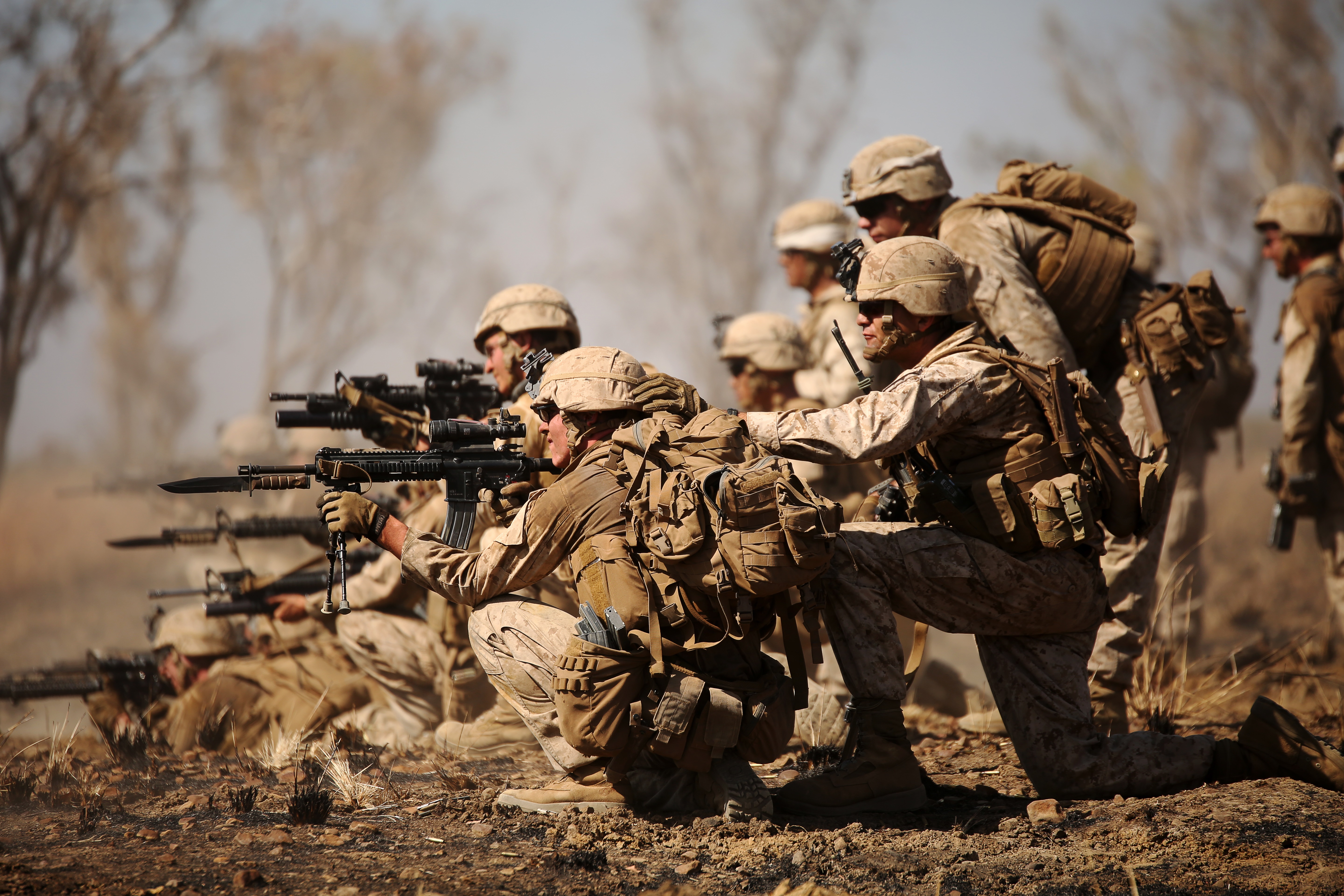Sending 2,500 Marines to Australia is taking a long time

U.S. and Australian troops have been fighting together since World War I, but President Trump’s recent spat with Australia’s prime minister underscores that cooperation between the two countries has not always been easy.
Since 2012, the U.S. has rotated a small force of Marines through Darwin, Australia. Both countries had hoped to send a full Marine Air-Ground Task Force of 2,500 Marines to Australia by 2016, but that timeline has been pushed back to around 2020.
The plan fell behind schedule amid negotiations between the two countries about who should pay to build the infrastructure for the extra Marines, said Andrew Shearer, a former Australian defense official.
“There was quite a long delay — 18 or 20 months — to conclude a cost-sharing agreement,” said Shearer, with the Center for Strategic and International Studies think tank. “Those cost-sharing negotiations, which were difficult — and I think a little bit acrimonious at officials’ level — that was concluded last October.”
In addition to disagreements about money, some U.S. officials felt the cost-share arrangement should mirror arrangements with other allies, such as South Korea and Japan; while Australian officials objected to applying a “cookie cutter model” to their country, he said.
“Even close allies have pretty tough negotiations with each other over this sort of burden-sharing,” Shearer said. “I think negotiations just got off to a slightly bad start. I think that, frankly, there wasn’t enough political push from both sides to get their officials to get the thing over the line sooner.”
Currently, both countries are assessing how much construction is needed at Robertson Army Barracks in Darwin and Royal Australian Air Force Base Darwin, Shearer said.
“Now they’re up to where — in my view, frankly — they should have been 12 or 18 months ago,” he said.
Australia is a key ally and was a major part of the Obama administration's effort on the Asia-Pacific region. But the so-called “pivot to Asia” ended up being more symbolic than substance as threats in the Middle East re-emerged.
The latest rotation to Darwin begins in April and will involve 1,250 Marines, mostly from 3rd Battalion, 4th Marines, based at Camp Pendleton, California, said Chuck Little, a spokesman for U.S. Marine Corps Forces, Pacific.
The Marines are also sending the most aircraft to Australia since the rotations there started, Little said. The aviation combat element will be made up of four MV-22B Ospreys from Marine Medium Tiltrotor Squadron 268; along with five AH-1W Super Cobra and four UH-1Y Venom helicopters from Marine Light Attack Helicopter Squadron 367. Both squadrons are based at Marine Corps Air Station Kaneohe Bay, Hawaii.
Little confirmed that the U.S. and Australia are reviewing how much infrastructure needs to be added to Robertson Army Barracks and RAAF Darwin to accommodate 2,500 Marines and their aircraft.


